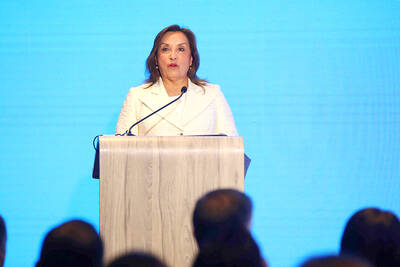LG.Philips LCD Co, the world's second-largest maker of liquid-crystal displays (LCD), reported record quarterly profit after a shortage boosted the prices of screens used in desktop computers and laptops.
Fourth-quarter net income was 760 billion won (US$811 million), compared with a 174.3 billion won loss a year earlier, Seoul-based LG.Philips said yesterday. That beat the 654 billion won median estimate of 17 analysts whom Bloomberg surveyed by phone and e-mail.
LG.Philips posted its highest annual sales as LCD manufacturers widened their lead over plasma displays in the US$93 billion flat-panel market. Analysts at Lehman Brothers Holdings Inc and Citigroup Inc predict the company will post record profit this year as the shortage of LCDs persists.
"2008 is going to be best year for LG.Philips in terms of earnings," said Woo Jun-sik, an analyst at Tong Yang Investment Bank in Seoul, who has a "buy" rating on LG.Philips. "Supply is tight and panel prices are not likely to fall more than previous years."
LG.Philips is the first major LCD maker to disclose earnings for the latest quarter. Suwon, South Korea-based Samsung Electronics Co, the industry's largest producer, reports today. Hsinchu, Taiwan-based AU Optronics reports next month. Sharp Corp, Japan's largest LCD maker, is scheduled to disclose results on Feb. 1.
Revenue, including those of overseas affiliates, climbed to a record 14.35 trillion won last year, the company said.
Annual operating profit and net income were the highest since 2004.

With an approval rating of just two percent, Peruvian President Dina Boluarte might be the world’s most unpopular leader, according to pollsters. Protests greeted her rise to power 29 months ago, and have marked her entire term — joined by assorted scandals, investigations, controversies and a surge in gang violence. The 63-year-old is the target of a dozen probes, including for her alleged failure to declare gifts of luxury jewels and watches, a scandal inevitably dubbed “Rolexgate.” She is also under the microscope for a two-week undeclared absence for nose surgery — which she insists was medical, not cosmetic — and is

CAUTIOUS RECOVERY: While the manufacturing sector returned to growth amid the US-China trade truce, firms remain wary as uncertainty clouds the outlook, the CIER said The local manufacturing sector returned to expansion last month, as the official purchasing managers’ index (PMI) rose 2.1 points to 51.0, driven by a temporary easing in US-China trade tensions, the Chung-Hua Institution for Economic Research (CIER, 中華經濟研究院) said yesterday. The PMI gauges the health of the manufacturing industry, with readings above 50 indicating expansion and those below 50 signaling contraction. “Firms are not as pessimistic as they were in April, but they remain far from optimistic,” CIER president Lien Hsien-ming (連賢明) said at a news conference. The full impact of US tariff decisions is unlikely to become clear until later this month

GROWING CONCERN: Some senior Trump administration officials opposed the UAE expansion over fears that another TSMC project could jeopardize its US investment Taiwan Semiconductor Manufacturing Co (TSMC, 台積電) is evaluating building an advanced production facility in the United Arab Emirates (UAE) and has discussed the possibility with officials in US President Donald Trump’s administration, people familiar with the matter said, in a potentially major bet on the Middle East that would only come to fruition with Washington’s approval. The company has had multiple meetings in the past few months with US Special Envoy to the Middle East Steve Witkoff and officials from MGX, an influential investment vehicle overseen by the UAE president’s brother, the people said. The conversations are a continuation of talks that

Nintendo Co hopes to match the runaway success of the Switch when its leveled-up new console hits shelves on Thursday, with strong early sales expected despite the gadget’s high price. Featuring a bigger screen and more processing power, the Switch 2 is an upgrade to its predecessor, which has sold 152 million units since launching in 2017 — making it the third-best-selling video game console of all time. However, despite buzz among fans and robust demand for pre-orders, headwinds for Nintendo include uncertainty over US trade tariffs and whether enough people are willing to shell out. The Switch 2 “is priced relatively high”